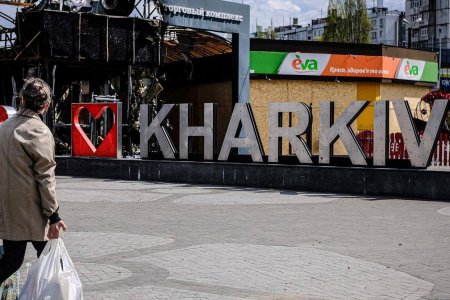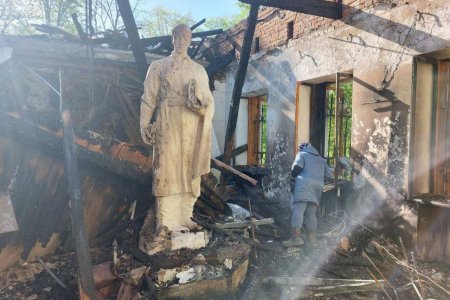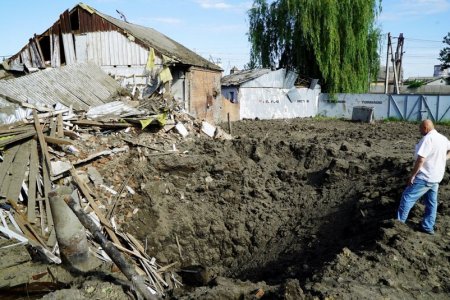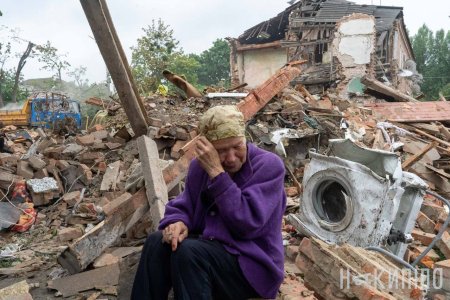
The Kharkiv Human Rights Protection Group is documenting international crimes (genocide, crimes against humanity, war crimes) allegedly committed by the Russian occupiers in Kharkiv and Kharkiv Oblast.
In this article we publish a summary of the events that took place in Kharkiv and Kharkiv region during the first 30 days of the full-scale Russian-Ukrainian war (February 24 – March 25, 2022). The information in this publication is approximate, based on the data we have collected and needs clarification.
A detailed description of the events for the period from February 24 to March 25, 2022 and a link to the original sources of information is contained in the daily chronicles of events for this period. We documented in a database of 562 episodes of 12 types of war crimes allegedly committed this month.
Information collection is ongoing. We ask eyewitnesses to send us information in the attached form.
1. Geographical localization
The city of Kharkiv
There is information about massive shelling of civilian infrastructure and residential areas Saltivka, HTZ, New Buildings.
At least the following areas were also shelled:
- Oleksiyivka, Kholodna Hora, Moskalivka, Pyatihatky, Zhuravlyovka, Novoselivka, Osnova,
- districts of metro stations "Kyivska", "August 23", "Botanical Garden", "Army",
- districts of Odesa, Klochkivska streets, Gagarin Avenue, Belgorod highway,
- Pavlove Pole, Sunny, Shatylivka, Shyshkivka, Velyka Danylivka microdistricts, Horizont residential area,
- the area of the Airport, the area of the Central Market, the area of the cinema named after Dovzhenka,
- Zhukovsky village,
- city center.
Kharkiv region
Massive shelling of the city of Izium and the Izium district, the cities of Chuguiv, Merefa, Balakliya, and Rohan urban-type settlements was reported in the region.
At least the following settlements were also shelled :
- city Lozova,
- urban-type settlements Pisochyn, Pechenegs, Cossack Lopan, High, Biennial,
- the villages of Tsyrkuny, Ruska Lozova, Yakovlivka, Vostochny, Berezivka, Slobozhanske, Kutuzivka, Slatyne,
- villages Khorosheve, Gorokhovatka, Zernove, Oleksiyivka, Pidlyman, Popivka, Kunye, Vesele, Volokhiv Yar, Lozovenky, Donets, Zavody, Rzhavets, Oskil, Milova.
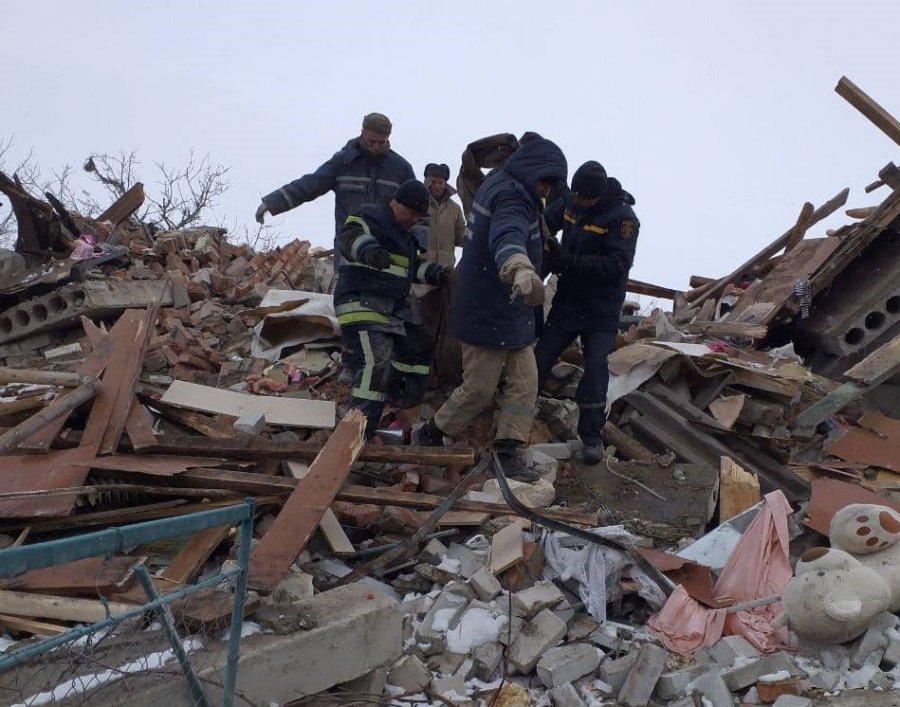
2. Information on civilian casualties
At least 272 civilians died from injuries during shelling and hostilities, at least 392 civilians were injured. These data need to be clarified in the future.
According to the Kharkiv Region Police , as of 10:16 a.m. on March 25, 2022, more than 300 civilians, including 15 children, have died in the Kharkiv Region since the beginning of the war.
It should be noted the following facts of death.
On March 1, 2022, Marina Fenina, a member of the OSCE Special Mission, was killed in shelling in Kharkiv .
On March 2, 2022, during a shelling of the Kharkiv City Council , Natalia Skibina, a student at the Kharkiv Theological Seminary who died volunteering and packing medicines for hospitals, was killed.
On March 10, 2022, Maryna Osipenko, a deputy of the Balakliia City Council , died under the rubble .
March 14, 2022 during the shelling of the Central Park. M. Gorky was killed by a volunteer who was distributing humanitarian aid from a car in front of the park.
Anton Khrustalov, a volunteer and driver of a minibus evacuating people, was killed during the shelling of the Saltivka district from the Grad MLRS.
On March 18, 2022, a 96-year-old former prisoner of Nazi concentration camps, Boris Romanchenko , died as a result of shelling by the Russian occupiers of Kharkiv . A Russian shell hit his house.
On March 23, 2022, the secretary of the village council Halyna Kursachova died as a result of the Russian shelling of the town of Staryi Saltiv .
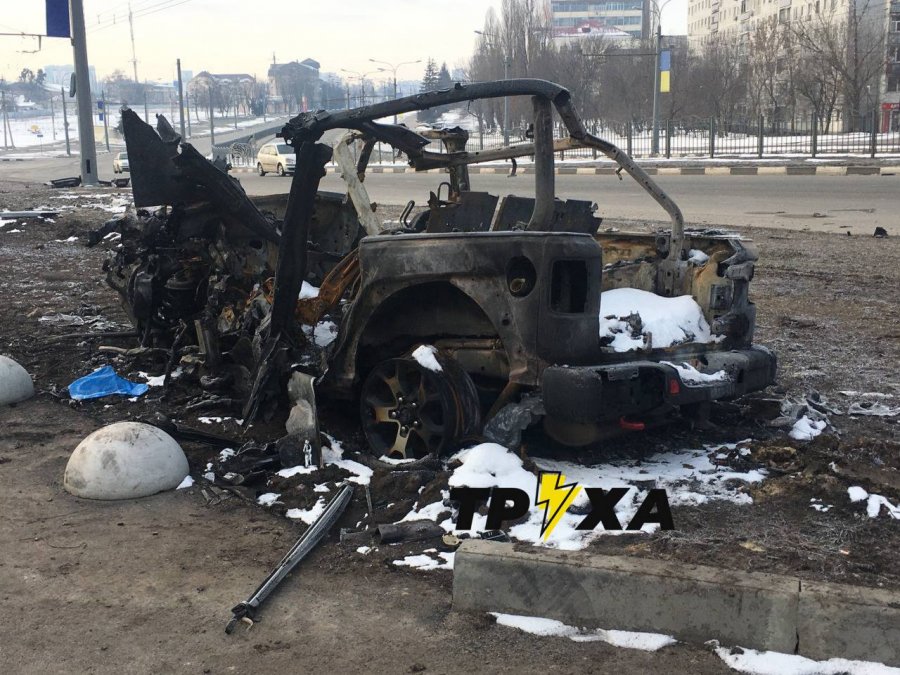
3. Information on residential buildings and civilian infrastructure damaged by hostilities
At least 909 buildings, including infrastructure objects of various purposes were damaged as a result of artillery shelling and hostilities:
- Dwelling houses – 485;
- Objects of educational and scientific purpose (taking into account damage to individual buildings and structures) – 98, including:
- Kindergartens – 32;
- Schools – 48;
- Higher educational institutions and institutions of professional (vocational) education – 16;
- Scientific institutions and establishments – 2;
- Medical facilities (including damage to individual buildings and structures) and medical transport – 13, including:
- Hospitals, clinics – 10;
- Other medical institutions and medical transport – 3;
- Cultural and recreational facilities (taking into account damage to individual buildings and structures) – 12;
- Religious objects – 6;
- Sports facilities – 5;
- Civil infrastructure facilities – 173, including:
- Factories, industrial facilities – 15;
- Administrative buildings – 11;
- Objects of resource infrastructure and infrastructure of housing and communal services – 21;
- Transport infrastructure facilities – 10;
- Garages and garage cooperatives – 47;
- Other objects of civil infrastructure – 69;
- Civil vehicles – 117.
These data need to be clarified.
It was also reported that as of March 23, 1,143 infrastructure facilities were destroyed in Kharkiv , of which 998 were residential buildings.
4. Information on disappearances and abductions of Ukrainian public servants, public activists and other persons
During the documented period, information is available on the disappearance of several persons, including at least 1 child (born in 2009).
On March 1, 2022, during a peaceful rally of the residents of Kupyansk, Kharkiv region, against the occupation of the city by Russian troops, the deputy of the city council Mykola Masliy disappeared.
On March 17, 2022, it became known that the Russian occupiers had abducted the head of the Velykoburlutsky territorial community, Viktor Tereshchenko, from his office. He was kept in the regional police department and not released. On March 18, 2022, it became known that Viktor Tereshchenko had been released.
On March 21, 2022, the Russian occupiers abducted the head of the Tsyrkunivka village, Mykola Sikalenko. It is reported that he was taken to the occupied Liptsy. As of the morning of March 25, 2022, Mykola Sikalenko is still in captivity in an unknown place.
5. Information on the work of humanitarian corridors and humanitarian aid points

According to the analyzed data , in the Kharkiv region as a whole, during the first 30 days of the full-scale war, it was announced that 10 humanitarian corridors would be opened for evacuation of people and import of humanitarian cargo. Of these, only 4 corridors were fully or partially operational.
The creation of humanitarian corridors was blocked in various ways by the occupying forces. As a result, 6 corridors did not work , 4 of them due to violations of silence code and shelling of the route, 2 due to provocations by the occupying forces, including 1 seizure of a humanitarian convoy and 6 accompanying people who were released the next day. The fact of shelling of humanitarian transport was reported separately.
There were also reports of shelling of humanitarian aid points. On March 24, 2022, the shell hit people waiting in line for humanitarian aid at the New Post Office (6 people were killed and 15 were injured). On March 25, 2022, the occupiers fired on the city polyclinic , where the humanitarian aid point was located (4 people were killed and 3 were injured).
6. Information on killings, looting and robberies allegedly committed by Russian servicemen
It was reported that on the night of March 13, 2022, the Russian military probably looted the emergency department in the village of Petrovske, Balakliia community. According to the report, "Russian invaders knocked on the door, stole medical equipment: a defibrillator, an EKG machine, a suitcase with medical devices and a car battery," and "all other property was smashed and smashed."
It was also reported that on March 15, 2022, servicemen of the RF Armed Forces entered the garage of a resident of the urban-type settlement Chkalovske, Chuguiv district, Kharkiv region. Seeing the man, one of the Russian servicemen shot him with an automatic weapon. The man died on the spot. After that, the military aggressor took the deceased's phone, money, his Volkswagen T4 and fled.
Conclusions
The analysis of the collected information gives grounds to claim that there were deaths and injuries of civilians, destruction and damage of civilian objects – residential buildings and infrastructure facilities due to deliberate and indiscriminate shelling.
The analyzed information also suggests that there were probable cases of enforced disappearances, captures of civilians, violations of humanitarian corridors and attacks on humanitarian aid and columns, volunteers, looting, murder and others.
We believe that such acts can be preliminarily classified as war crimes under Article 8 (2) (a) (i), (iii), (iv), (viii), (b) (i), (ii), (iii), (iv), (v), (ix), (xx), (xxv) of the Rome Statute of the International Criminal Court.
Thus, in our opinion, for the first 30 days of the full-scale Russian-Ukrainian war in the Kharkiv region, 12 types of alleged war crimes were committed, which in general can be described as follows:
- willful killing;
- willfully causing great suffering, or serious injury to body or health;
- illegal, senseless and large-scale destruction of property;
- taking of hostages;
- intentionally directing attacks on civilians;
- intentionally directing attacks on civilian objects;
- intentionally directing attacks on a humanitarian aid depot, humanitarian convoy, humanitarian mission or humanitarian corridor;
- intentionally launching attacks resulting in accidental loss of life or injury to civilians or damage to civilian objects or widespread, long-term and severe damage to the natural environment;
- attacking or bombarding, by whatever means, towns, villages, dwellings or buildings which are undefended and which are not military objectives;
- intentionally directing attacks that have led to damage or destruction of historical monuments, hospitals, religious buildings, educational institutions, science, art;
- the use of weapons or means of war which cause undue damage or unnecessary suffering or are indiscriminate;
obstruction of humanitarian missions in the delivery of water and food.
